Éponge bossue
Porifera, Demospongiae, Hadromerida, Suberitidae
Suberites massa Nardo, 1847
Description :
L’éponge bossue est massive, jaune-orangée avec des lobes et des crêtes irrégulières en réseau anastomosé. Elle possède une consistance compacte et ferme. Elle est souvent recouverte par de la vase en particulier dans les interstices des lobes. Sa taille la plus commune est celle d’une « main » (van Soest et al., 2000 ; Picton et al., 2011).
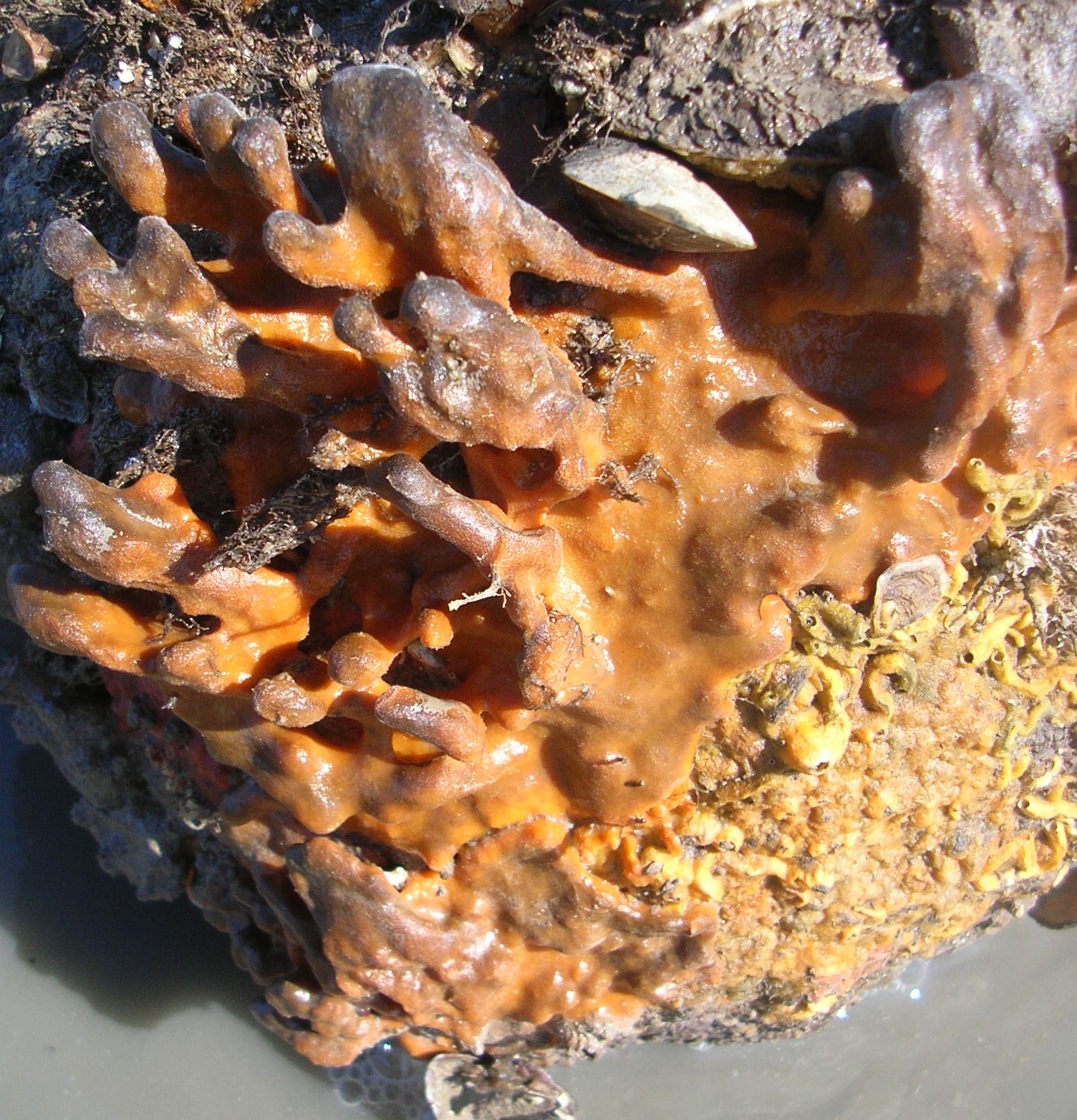
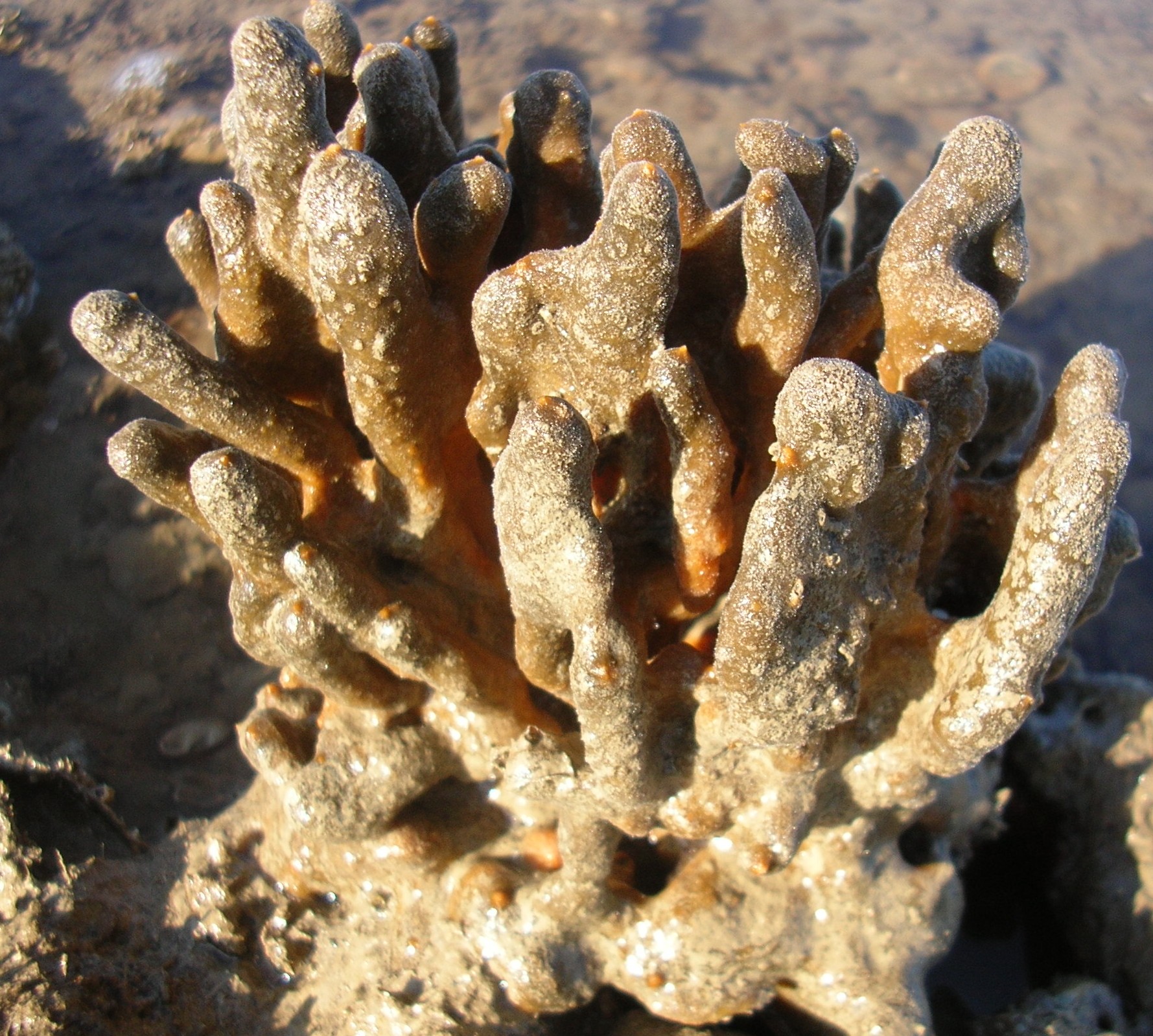
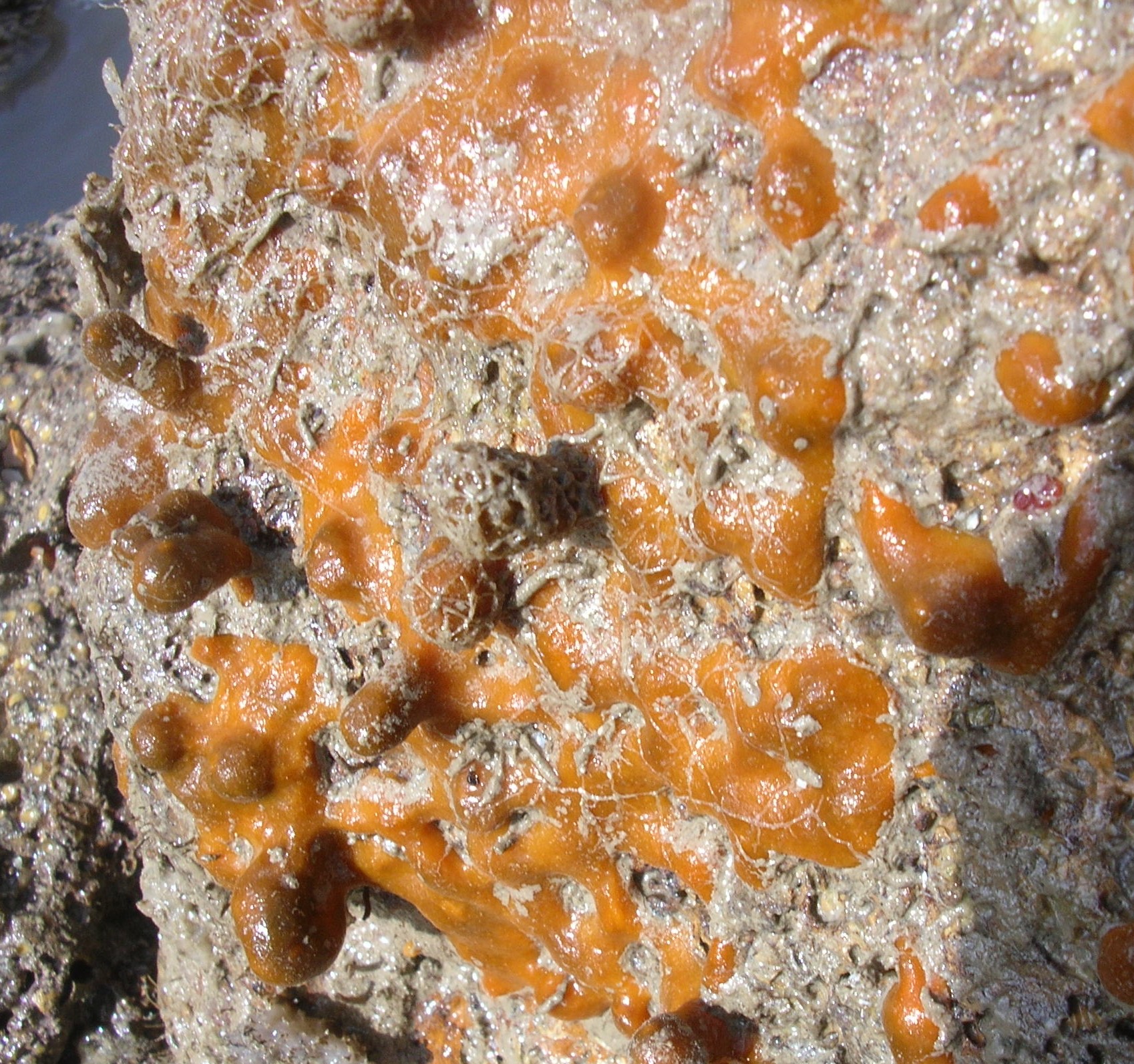
Différentes formes de l’éponge bossue (Suberites massa Nardo, 1847).
Écologie :
Elle s’observe dans les eaux saumâtres et troubles des baies, des estuaires et des ports où des courants modérés de marées sont présents. Elle est très commune sur le côté des blocs rocheux depuis le médiolittoral inférieur jusqu’au circalittoral (van Soest et al., 2000 ; Picton et al., 2011).
Distribution :
Des côtes Hollandaises jusqu’à la mer Adriatique, en passant par la Manche et les côtes occidentales de la France (van Soest et al., 2000 ; Picton et al., 2011; van Soest, 2013).
Spicules :
Ce sont des tylostyles dont une grande proportion sont rectilignes et une faible proportion légèrement incurvés. Ils mesurent de 160 à 950 µm de long (van Soest et al., 2000 ; Picton et al., 2011).
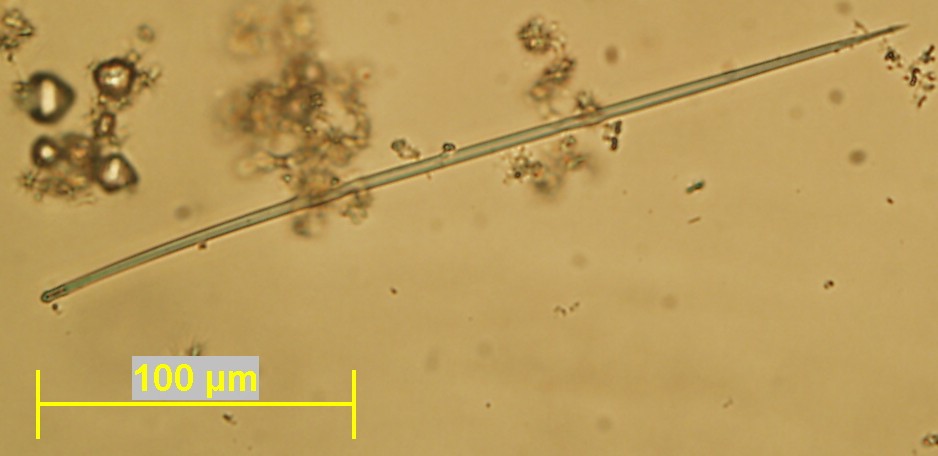
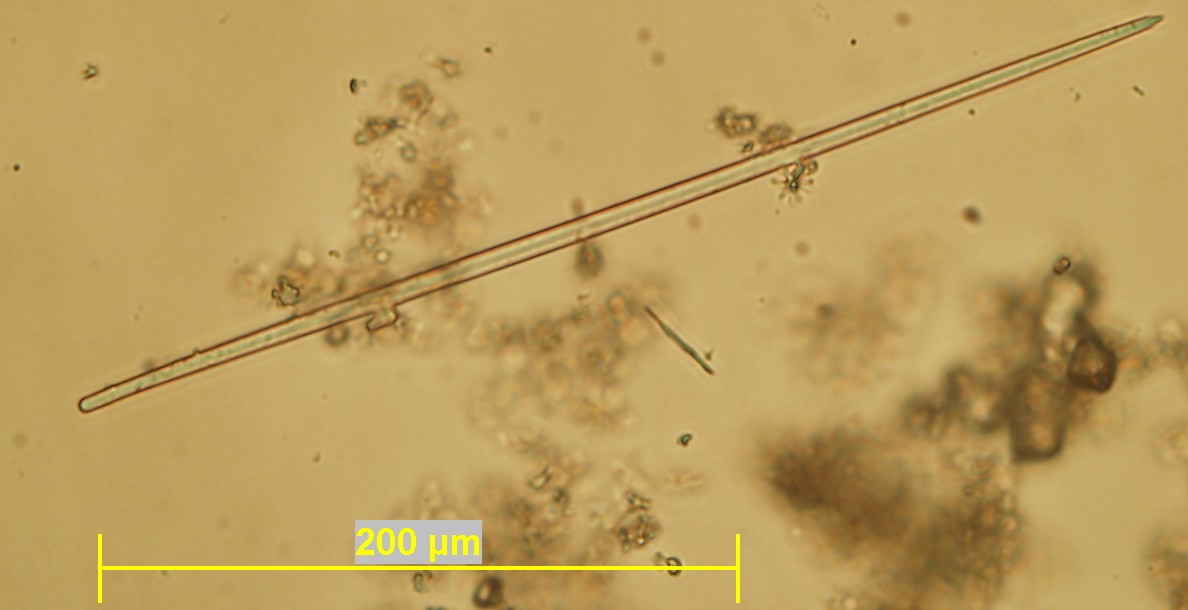

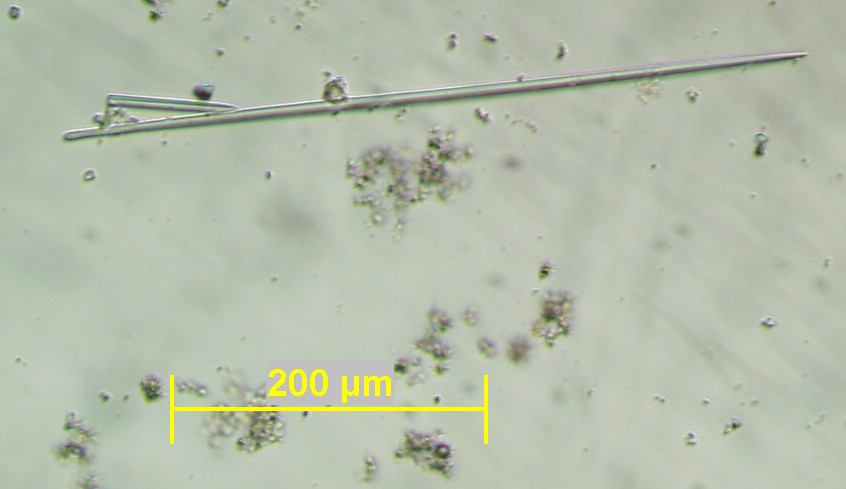
Tylostyles plus ou moins rectilignes de l’éponge bossue (Suberites massa Nardo, 1847).
Remarque : les têtes de tylostyles sont peu marquées.
Références bibliographiques :
Picton, B. E., Morrow, C. C. & van Soest, R. W. B., (2011) in Sponges of Britain and Ireland. (http://www.habitas.org.uk/marinelife/sponge_guide/sponges.asp?item=C3590, 25.08.2011.
van Soest, R., (2013) in European Register of Marine Species M. J. B. Costello, P.; Boxshall, G.; Arvantidis, C.; Appeltans, W., Ed.
van Soest, R. W. M., Picton, B. E. & Morrow, C., (2000) Sponges of the North East Atlantic, in World Biodiversity Database CD-ROM Series, Windows/Mac version 1.0. ( ETI, University of Amsterdam: Amsterdam).
Suberites massa Nardo, 1847
Description:
Massive-lobose, often having the form of a flattened hemisphere, composed of a network of anastomosing plates and ridges, with the orange crests showing through but the interstices usually being filled with silt. The whole sponge may approximate the form, appearance and size of a human brain. At lateral growth areas repent and compact coalescing branches can occur. In places, tangled masses of these branches can themselves form the body of the sponge. Size up to 10cm thick by 30cm in diameter, but smaller "fist-sized" specimens are more typical (van Soest et al., 2000 ; Picton et al., 2011).
Habitat:
Found in the silty brackish water of harbours, estuaries and lagoons where there are moderate tidal currents. It colonizes shells (often over-growing them so that the sponge is free-standing), boulders and sea walls. Usually sublittoral but in places, especially if shaded, can occur on the lowest shore (van Soest et al., 2000 ; Picton et al., 2011).
Distribution:
Reported in Holland, in the British Isles only on the Channel coast, and along the west coasts of France. Also known from the Adriatic Sea (van Soest et al., 2000 ; Picton et al., 2011; van Soest, 2013).
Spicules:
Megascleres are large tylostyles in the range 160-950 x 4-16µm. They. A high proportion of the spicules are straight, with only a few being slightly curved. There are no microscleres (van Soest et al., 2000 ; Picton et al., 2011).
Comment: tylostyles head are unlabeled
References:
Picton, B. E., Morrow, C. C. & van Soest, R. W. B., (2011) in Sponges of Britain and Ireland. (http://www.habitas.org.uk/marinelife/sponge_guide/sponges.asp?item=C3590, 25.08.2011.
van Soest, R., (2013) in European Register of Marine Species M. J. B. Costello, P.; Boxshall, G.; Arvantidis, C.; Appeltans, W., Ed.
van Soest, R. W. M., Picton, B. E. & Morrow, C., (2000) Sponges of the North East Atlantic, in World Biodiversity Database CD-ROM Series, Windows/Mac version 1.0. ( ETI, University of Amsterdam: Amsterdam).
Date de dernière mise à jour : 05/07/2021
Ajouter un commentaire